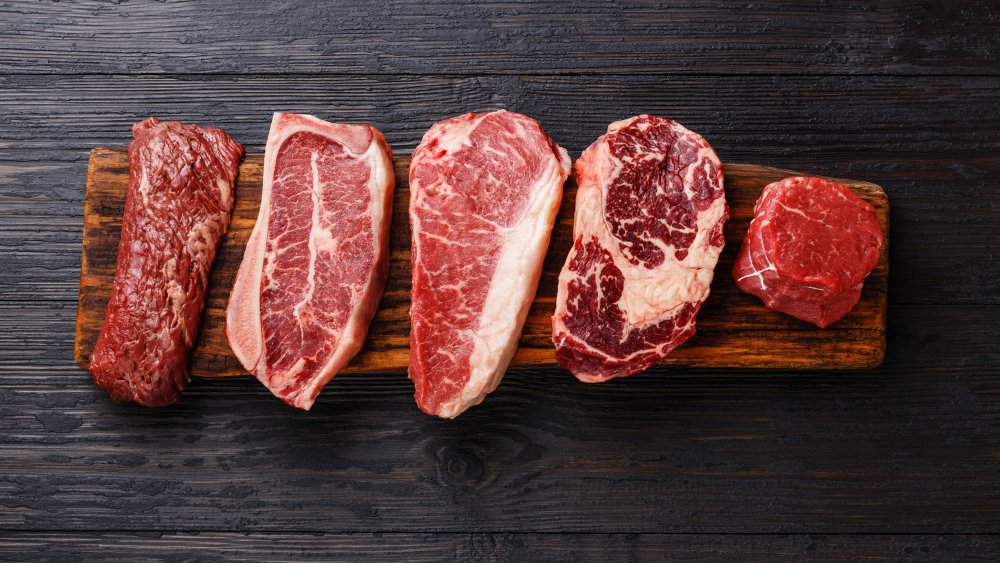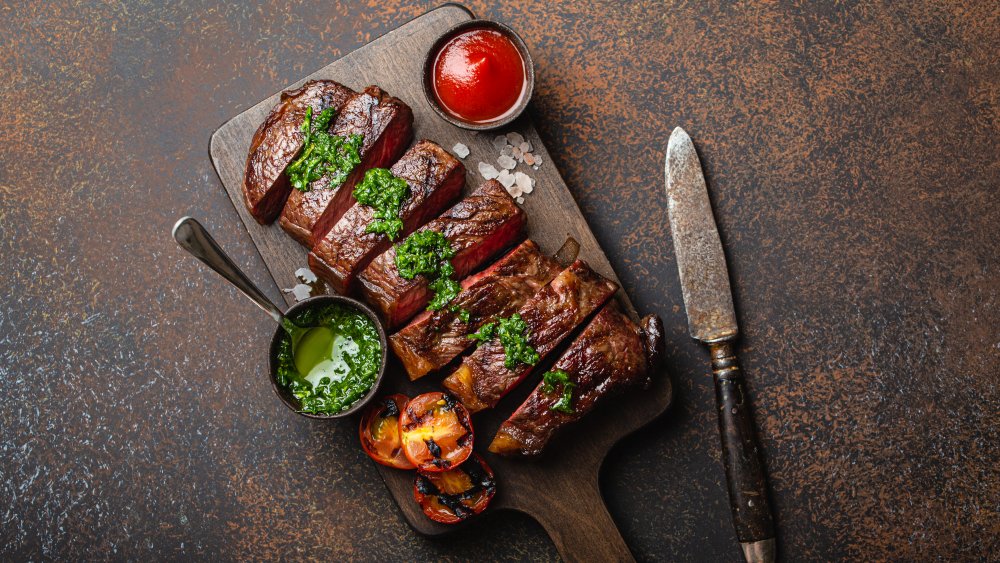Why Some Steakhouses Allow Their Steaks To Get Moldy
There's a reason steakhouse steaks are frequently juicer, more flavorful, and more robust than their home-cooked counterparts. That reason actually has very little to do with the spices they use, or even their method of cooking the meat. In fact, most of the intense flavor actually comes in before the steak even hits the pan. Many expensive steakhouses dry-age their steaks, which means they leave them in a controlled environment to age, sometimes for over 28 days. While there is some debate over if the process can be replicated at home, there is no denying that dry-aging steak will yield amazing results, according to Thrillist.
Dry-aging is actually a process of controlled spoilage. Similar to the way certain cheeses are aged to create a rich, distinctive taste, a thin layer of mold is allowed to form over the top of the meat to create a bold, juicy, and uniquely flavorful steak. But the dry-aging process is more complicated than just letting meat spoil. To begin with, each cut of meat is placed in a carefully climate-controlled room and allowed to age for a week or more, sometimes all the way up to six, per Robb Report. The Daily Meal states that the room has to be kept at the perfect temperature of around 35 degrees, which allows the meat to age without becoming warm enough to spoil. Any colder, and the meat will freeze.
Controlled spoilage creates the most flavorful cuts of meat
Humidity is also a big factor when it comes to dry-aging. The Daily Meal explains that if it is too humid, bacteria will grow on the meat; but if it isn't humid enough, the meat runs the risk of drying out. The sweet spot for a perfectly aging steak is between 85 to 90 percent humidity, according to Thrillist. The slabs of meat are exposed to constant air circulation, which keeps the steaks dry and encourages the correct growth. During the dry-aging process, the meats natural enzymes cause the muscle tissue to break down, making for a tender cut with a more concentrated flavor.
Over time, a layer of mold will form, but it's a good mold "which will slowly start to break down and increase the amount of evaporation... As that happens the mold will extend its life and grow. It's like the mold on blue cheese — it's good mold not bad mold," according to Chris Pandel, the executive chef at Chicago's premier steakhouse Swift & Sons (via Robb Report). Before serving, the mold layer is carefully cut off, leaving behind the nutty, funky, and intense flavor that makes a great dry-aged steak.

